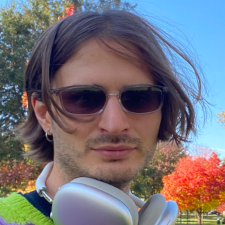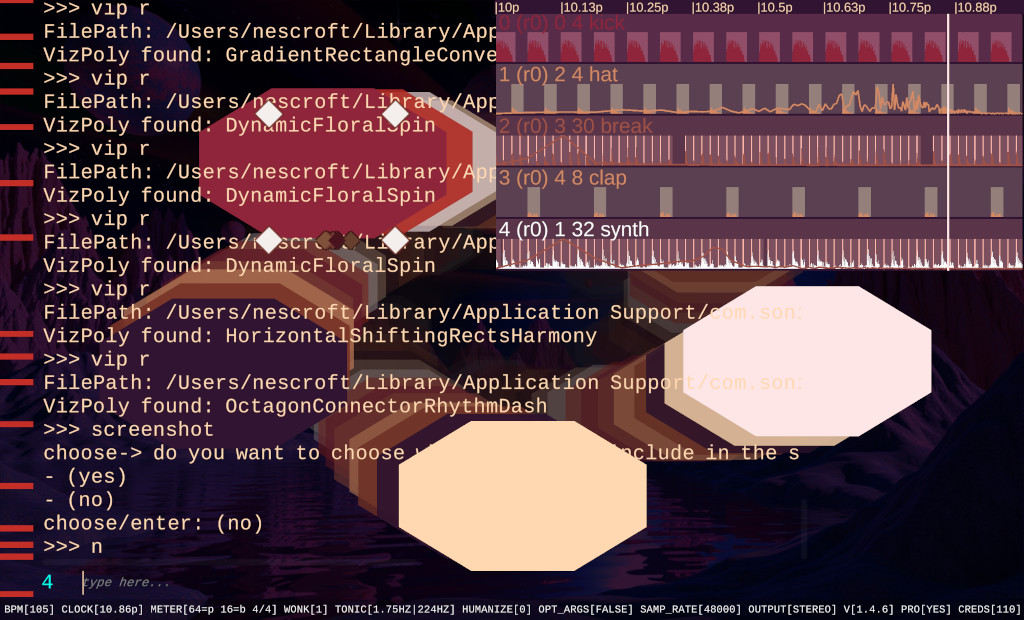- Published on
Harnessing Randomness in Electronic Music: The Beat DJ Approach
- Authors

- Name
- Nes Croft
- @nescroft
Harnessing Randomness in Electronic Music: The Beat DJ Approach
 Soniare's Beat DJ Music Software
Soniare's Beat DJ Music SoftwareIn the world of electronic music production, randomness isn't chaos; it's a creative catalyst. While traditional DAWs treat randomization as an afterthought, Beat DJ puts controlled chaos at the heart of its design philosophy, offering dozens of ways to inject unpredictability into your musical creations.
The Philosophy of Musical Randomness
Beat DJ operates on a simple yet profound principle: the best electronic music emerges from the tension between human intention and algorithmic surprise. Every command in the system offers randomization options, from the fundamental (ts r for random time signatures) to the granular (mo distortion r for random effect intensity).
This isn't about replacing musical intuition; it's about augmenting it. When you type bpm r, you're not abandoning control; you're delegating tempo decisions to an algorithm while retaining the power to accept, reject, or modify the result.
Randomness at Every Layer
Temporal Randomness
Beat DJ 's approach to time is inherently fluid. The timeSignature command includes options like random time signatures that can span from micro-quintuple (5/16) to broad quintuple (15/8). Each carries its own musical personality:
ts 5/16creates "zippy pickup feel"ts 11/16delivers "Balkan kopanitsa, irregular grouping"ts 19/16produces "hyper-odd asymmetrical feel"
The random option (ts r) doesn't just pick any time signature; it intelligently selects from musicologically meaningful divisions, each one a doorway to different rhythmic territories.
Harmonic Randomness
The scale system goes beyond standard Western temperament. Commands like scale r generate random just intonation scales, while scale re creates random EDO (Equal Division of the Octave) scales. This isn't academic exercise; it's practical xenharmony, allowing producers to stumble upon microtonal relationships they'd never consciously choose.
Textural Randomness
The modify command exemplifies Beat DJ 's randomness philosophy. With mod bitcrush r, the system applies random bitcrusher amounts across your audio, creating spatial depth that feels organic rather than programmed. The dry/wet mix options include patterns like:
rfor pure randomnesspfor "human-ish pattern"adrpto "combine presets to form larger patterns"
Controlled Chaos: The Change Command
Perhaps no feature embodies Beat DJ 's randomness approach better than the change command. Type cha r 2p and every two phrases, the system randomly transforms your selected sounds. The r parameter means "all possible changes"; dynamics, volume envelope, transients, rolls, reverses, and swaps.
This creates music that evolves organically, where patterns emerge and dissolve without conscious intervention. It's composition through curation; you set the parameters, the algorithm explores the possibilities.
Rhythmic Randomness: Beyond the Grid
The shuffle command with probability settings (shu 5 for 50% probability) creates rhythmic variations that breathe life into rigid patterns. Combined with glitch commands (gli 7 for 70% glitch probability), you get rhythmic structures that maintain coherence while constantly surprising.
The meter command takes this further with polymeric randomness. Set met r and the system creates random polyrhythmic frameworks, potentially layering different pulse subdivisions like "2,11" (stretched offset tension) or "7,13" (slow irregular).
The Aesthetics of Algorithmic Choice
Beat DJ 's randomness isn't uniform white noise; it's weighted toward musical results. When you request random BPM (bpm r), it doesn't just pick any number; it selects from musically meaningful tempos with 7.5 BPM step sizes, landing on values that align with genre conventions and harmonic relationships.
This curation extends to every random parameter. Random scales favor consonant just intonation ratios. Random effects maintain musical coherence. Random time signatures cluster around mathematically interesting divisions.
Practical Applications
Live Coding and Performance
In live settings, randomness becomes a collaborative partner. Commands like emote r (random happy emojis) or tts with random voice selection create unpredictable moments that keep both performer and audience engaged.
Composition and Production
For studio work, randomness serves as an idea generator. Start a session with ts r, bpm r, scale r, and cha r 1p. Within minutes, you have a unique musical framework; time signature, tempo, harmonic palette, and evolving textures; none of which you consciously chose, all of which you can shape.
Sound Design
The granular randomness in commands like generate allows for serendipitous discovery. Generate random synthesis parameters, then layer random modifications. What emerges often surpasses what you'd design consciously.
The Human Element
Beat DJ 's randomness philosophy recognizes something crucial: creativity emerges from constraints, not infinite freedom. By offering structured randomness; random but musical time signatures, random but harmonic scales, random but weighted effect parameters; the system provides creative constraints that inspire rather than overwhelm.
The real artistry lies in knowing when to accept algorithmic suggestions and when to override them. Beat DJ makes randomness conversational; it proposes, you dispose. This creates a collaborative relationship with the machine, where your musical intuition guides algorithmic exploration.
Beyond Randomness: Emergence
What makes Beat DJ 's approach to randomness unique isn't the individual random parameters; it's how they interact. Random time signatures combine with random scales, random BPM, random effects, and evolving change patterns to create emergent musical complexity that no single random parameter could achieve.
This is randomness as compositional strategy, where the goal isn't chaos but structured unpredictability. It's a tool for breaking out of creative ruts, for discovering musical territories you'd never consciously explore, and for creating electronic music that feels alive, breathing, and perpetually surprising.
In Beat DJ , randomness isn't a feature; it's a philosophy. It's the recognition that in electronic music, the most human thing you can do is embrace the algorithmic unknown, then shape it with intention, intuition, and taste.
